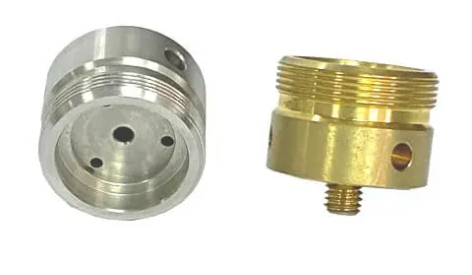Views: 0 Author: Site Editor Publish Time: 11-07-2025 Origin: Site








As industries continue to evolve and grow, the demand for enhanced performance and operational efficiency in industrial systems is higher than ever. In a rapidly advancing technological world, businesses are consistently seeking ways to improve the functionality, reliability, and longevity of their equipment. One of the key elements driving this efficiency is the evolution of pump and valve parts.
Pump and valve components, which are integral to the smooth operation of systems that transport fluids and gases, are undergoing significant advancements. In particular, performance-optimized components have become crucial for industries such as oil and gas, water treatment, and manufacturing. These improvements are not just about increasing efficiency but also about reducing downtime, lowering operational costs, and enhancing the overall sustainability of industrial systems.
One of the biggest innovations in pump and valve parts is the development of high-performance materials. Advances in materials science have led to the creation of new alloys, ceramics, and composites that offer exceptional performance under extreme conditions. These materials have revolutionized the durability and efficiency of pumps and valves.
Ceramics, such as silicon carbide, and advanced alloys are becoming increasingly popular in the manufacturing of pump and valve components. These materials are particularly beneficial in high-pressure and high-temperature environments where standard metals might fail. They offer increased resistance to corrosion, erosion, and wear, all of which contribute to a longer lifespan for industrial equipment.
For example, ceramic coatings are being applied to pump and valve components to protect them from the harsh conditions often found in the chemical and petrochemical industries. The hardness of ceramics allows them to withstand abrasion, reducing wear and tear, and minimizing the need for frequent replacements.
High-performance materials provide excellent resistance to extreme pressure and wear, both of which are critical in ensuring the efficiency of industrial systems. Pumps and valves often operate in challenging conditions, including high flow rates, elevated temperatures, and aggressive chemicals. The right material ensures that parts can endure these conditions, allowing for better functionality and fewer breakdowns. The use of these materials reduces maintenance costs and operational downtime, benefiting businesses in the long term.
As industries push for higher performance and operational efficiency, precision engineering is becoming a dominant trend in the manufacturing of pump and valve parts. The shift toward tighter tolerances, enhanced precision, and more accurate designs ensures that pump and valve components are optimized for smoother operation.
Precision engineering involves using advanced technologies and methodologies to manufacture parts with extremely tight tolerances. These tighter tolerances ensure that components fit together seamlessly, minimizing the risk of leaks, friction, and misalignment. This precision also ensures that the parts operate efficiently, reducing energy losses and improving fluid flow.
In pumps, for instance, a precise fit of the impeller and housing can reduce turbulence, improving the efficiency of fluid movement. In valves, precise machining of the seats and seals ensures better pressure control and tighter seals, preventing leaks.
Precision engineering ensures that pump and valve parts operate smoothly with minimal energy loss. This not only enhances performance but also reduces energy consumption, making operations more cost-effective. By minimizing friction and ensuring proper alignment, precision engineering optimizes efficiency, leading to reduced wear on components and longer service life.

In pump and valve systems, controlling the flow of liquids and gases is crucial for maintaining optimal operation. One of the most significant trends for 2025 is the advancement of fluid flow control technologies. Engineers are increasingly focused on creating components that provide better control of the flow, contributing to smoother system operations and reduced energy consumption.
Manufacturers are introducing new designs that enhance fluid control in pumps and valves. For example, advanced valve designs that feature more precise flow regulation are becoming common in industries that require exact pressure management, such as water treatment and chemical processing. These designs allow for finer adjustments in the flow rate, ensuring that the system operates within the desired parameters.
Optimizing the flow of fluids leads to several benefits, including enhanced system performance and reduced energy consumption. With more precise control, systems can maintain consistent pressure and flow rates, preventing energy waste due to fluctuations. For instance, a pump that operates at an optimal flow rate consumes less power and delivers more consistent results, improving the overall efficiency of the system.
Wear and tear are constant challenges for industrial systems that rely on pumps and valves to transport fluids. However, the development of advanced coatings and wear-resistant materials is helping to extend the lifespan of these critical components. By focusing on reducing wear, businesses can lower maintenance costs, reduce downtime, and increase the overall efficiency of their operations.
One of the most notable trends in the industry is the development of wear-resistant coatings for pump and valve components. These coatings protect against abrasion, erosion, and corrosion, significantly extending the life of the parts. For instance, ceramic-based coatings are increasingly applied to valves and pumps in industries like mining, where wear from harsh materials is a significant concern.
By using wear-resistant materials and coatings, industries can reduce the frequency of part replacements and minimize downtime. These innovations enable pumps and valves to perform optimally for longer periods, reducing the need for costly and time-consuming maintenance. This results in a more efficient system with fewer interruptions, benefiting businesses that rely on continuous operations.

The future of pump and valve parts is poised to be shaped by technological innovations, particularly in the realm of artificial intelligence (AI) and machine learning (ML). These technologies are expected to play a pivotal role in improving the performance of pump and valve components, particularly in areas like predictive maintenance, real-time performance optimization, and wear prediction.
Looking ahead to 2025, we can expect to see continued improvements in the performance of pump and valve components. The next generation of pump and valve technologies will likely be smarter, more efficient, and capable of operating under even more challenging conditions. Innovations such as AI-driven predictive maintenance systems will allow businesses to anticipate and address potential issues before they occur, ensuring that systems run smoothly and efficiently.
AI and machine learning are expected to revolutionize the way pumps and valves are maintained. By leveraging real-time data, AI algorithms can predict when components will experience wear, enabling businesses to schedule maintenance proactively. This will reduce unplanned downtime, extend the life of parts, and optimize the overall performance of industrial systems.
As industries continue to demand higher performance, operational efficiency, and reduced downtime, selecting the right pump and valve parts has never been more important. The advancements in materials, precision engineering, flow optimization, wear resistance, and AI-driven technologies will play a crucial role in shaping the future of industrial systems. By investing in high-performance components, businesses can improve efficiency, reduce maintenance costs, and increase the lifespan of their equipment.
As we look toward 2025, it's clear that the industry is on the brink of exciting changes. Companies that embrace the latest technological advancements in pump and valve parts will gain a competitive edge, ensuring that their operations remain cost-effective, sustainable, and reliable. Investing in next-generation performance technologies is not just a smart move—it's a necessary step for staying ahead in an increasingly competitive industrial landscape.
Our OEM Stainless Steel/Brass CNC Machining Mid-Size Pneumatic Valve Body is engineered for precise flow control in pneumatic systems used across industrial automation, energy, and manufacturing sectors. Manufactured in Jiangsu, China, this valve body is available in premium stainless steel or brass to suit different environmental and performance requirements. With ±0.05 mm tolerance, every component meets stringent quality standards for durability and operational reliability.
The CB310 Custom Slewing Drive is engineered for solar power tracking systems and other industrial applications that require smooth, precise rotational control. Designed and manufactured in Jiangsu, China, this slewing drive integrates a single-row cross roller bearing for maximum stability, and is compatible with either DC motors or hydraulic motors, depending on your project requirements. With diameters ranging from 200 mm to 4000 mm, this drive is suitable for a wide range of solar panel arrays and mechanical systems.
Add: 20/FL., 26 North Zhongshan Road, Nanjing, Jiangsu, China
Tel: 0086-25-83317070
Fax: 0086-25-83303377
E-mail: peter@jocmachinery.com


